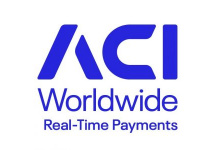5 Trends Disrupting the Payments Industry

- Michael Jaiyeola, Fintech Lead at Erlang Solutions
- 21.04.2022 03:00 pm #payment
Payments are the backbone of a functioning global economy. A payments system can be defined as any system that can be used to settle a financial transaction by exchanging monetary value.
Evolving customer expectations alongside technological advances are driving innovation that prioritises speed, near to real-time payments, frictionless transactions and decentralised models. At the same time, market competition is driving fees to decrease. Traditional players are, therefore, struggling to maintain the same levels of profitability using existing payment infrastructure.
Against this backdrop, payments are part of financial services that have undergone rapid and transformational change over recent years. In this article, I will take a look at five of the main drivers of change in the payments industry.
A new cashless world
Consumers' shift to digital channels is driving demand for seamless fulfilment and instant gratification. A recent Capgemini World Payments Report survey found an increase of 24% to 46% of respondents who had e-commerce accounting for more than half of their monthly spending from before the pandemic to now.
With 91% of the global population expected to own a smartphone by 2026, according to Statista, these customers are unlikely to return to the way things were done before, now having experienced the speed and convenience of digital payments and greater services.
Demand for faster payments
Demand for instant transactions is driving change in cross-border payments, international remittances and e-commerce. Previously, mirroring the instantaneousness of a cash transaction via electronic means had been an ongoing technical challenge. Now, real-time clearing and settlement facilities in many markets make processing payments almost instantly possible.
Frustration with the latency and cost of the traditional banking model has led to the emergence of alternative options. Innovative solutions such as the P27 initiative in the Nordic region show how fintech can blend with conventional systems to provide better payments infrastructure for all.
Embedded payments
Embedded finance, where financial products are added to the transactional flow in non-financial platforms, has been a much discussed topic in financial services for the last couple of years. With consumers demanding ever more convenient, frictionless ways to make payments using various devices from wallets to wearables, embedded or contextual payment options are adding convenience and speed to the payments process.
More payments data
The diverse range of digital touchpoints involved in a cashless payments ecosystem provides vast amounts of data. This is of significant value to banks and fintechs to grow client relationships based on analytics and insights. Companies that can unlock the true value of payment activity data by leveraging powerful AI and ML tools can offer more efficient, tailored products in a more secure, protected environment.
Also, we can expect the full implementation of the messaging standard ISO20022 to be a potentially vital part of improving the amount and quality of payments data available in the industry.
Financial crime
Rapidly increased e-commerce provides an opening for fraudsters. The use of AI and ML allows payment companies to detect fraud earlier by learning the financial habits of clients so that unusual behaviour is highlighted. Fraud prevention security measures, like voice-activated transactions, biometric authentication, and smart assistant payment verification, all have a part to play in securing the future of digital payments.
The primary dilemma in modern payments is the trade-off between customers (demanding easier in real-time transactions actioned across devices) and regulators (concerned about increased exposure to fraud). Payments companies, therefore, need to strike the right balance delivering new user-friendly processes that are highly secure and compliant.
What’s the future of payments?
The payments ecosystem is a varied one with lots of layers and companies filling niche use cases. On the frontend, we are seeing more forms of instant payments and innovations such as digital wallets and embedded finance and BNPL. Disruption of the payment industry is moving on from providing these user-friendly frontend mobile apps to improving backend processing and the infrastructure used to execute payments.
Real-time payments technology and the utilisation of cryptocurrencies, stablecoins, CBDCs, blockchain, AI and ML can all help offer improvements to the speed and efficiency of payment processing. The emergence of blockchain and decentralised finance that can bypass the traditional financial initiations together to enable direct payments between parties may be especially revolutionary.
You can take a deeper dive into this and other emerging tech trends in financial services by downloading the Erlang Solutions Fintech Trends in 2022 white paper.


























